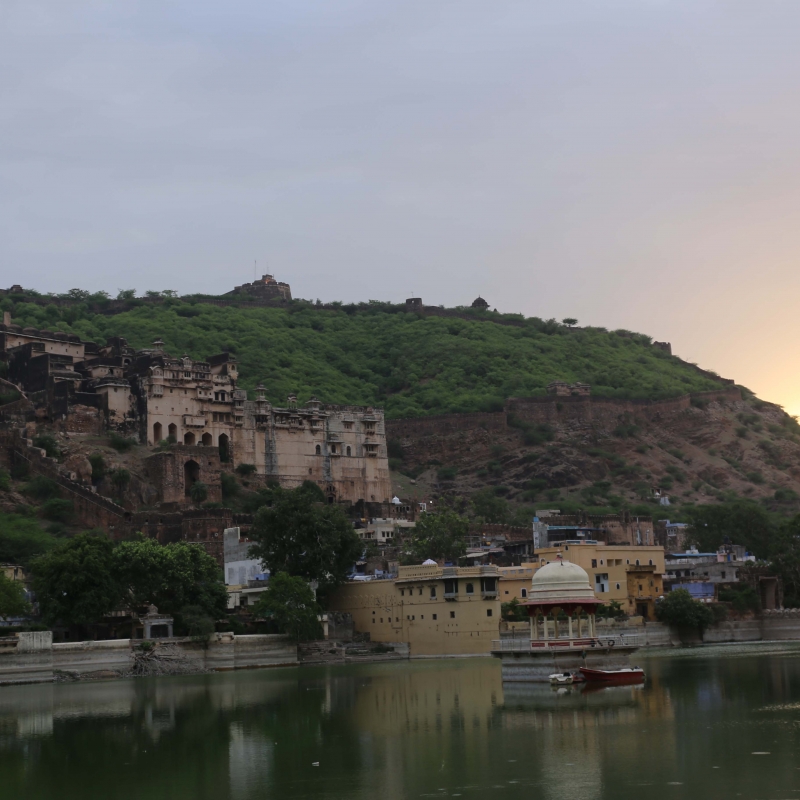Rajasthan, home to India’s desert tracts and the Great Indian Thar Desert, is also known for its rich water architecture. From simple wells and tanks that dot villages to ornate lakes commissioned by the elite, the elaborate, interconnected water architecture of this region once transformed the scant rainfall it received into a viable source of water that communities could rely on throughout the year. Most of these structures have now fallen into disuse and have been transformed into receptacles for trash, especially in urban and suburban areas where piped water has replaced traditional sources.
The different types of water architecture of Rajasthan are identified by various local terms that differ from region to region. Simple wells with no steps where buckets are used to haul water from a deep cylindrical pit are called kua or bera. The common English term ‘stepwell’ encompasses two main types of structures and their hybrids: the bavdi, baoli or vav (as it is called in neighbouring Gujarat), is typically a sheltered stepped well where a deep well spilling into a rectangular tank is reached by descending levels of steps from one side (Fig. 1); while jhalra are square open structures closer in shape to a stepped pond, with staggered stairs reaching down to the water from three or four sides (Fig. 2). In both cases, deep cylindrical pits that tap into the water table can be found at the far end of the reservoirs. Often the term bavdi can be seen being used to refer to both kinds of structures. The Sanskrit root of this term, as laid down in the Silpa texts is ‘vāpi, vāpī or vāpikā’,[1] a term that refers to an oblong tank or pond.
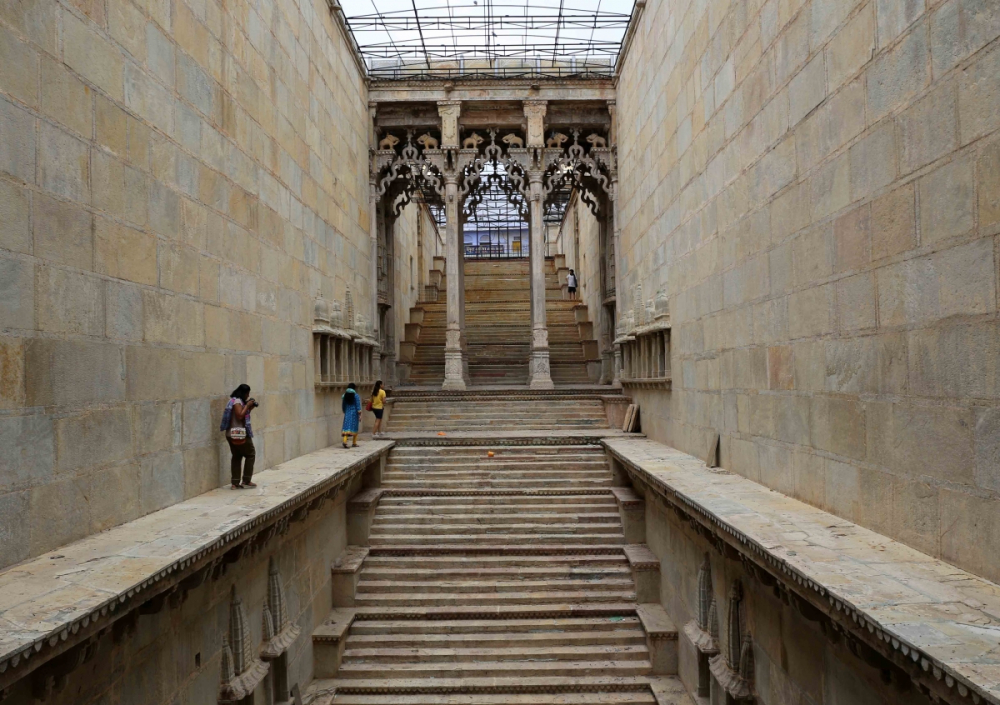
Fig. 1. Steps descending into Raniji ki Bavdi, a stepped well in Bundi
Fig. 2. A stepped pond
Some of the oldest water structures of Rajasthan belong to the category of stepped ponds. Among them are the ninth- and tenth-century monuments Chand Baori in Abhaneri near Jaipur and Katan Vav in Osian near Jodhpur. The term kunda is also used to refer to a stepped pond reached by multiple levels of stairs. Terms such as kunda-vav are used to describe hybrid structures. Stepped ponds such as the jhalra and kunda are typically located close to temples; bavdis less so though they do often hold small shrines and sacred imagery. The terms talab and sagar are used to refer to lakes and large tanks. These often have deep wells at the bottom. Pucca tanks and ponds are also referred to by the term tanka.
Water architecture is of course not restricted to reservoirs such as wells, tanks and ponds. A vital component of water architecture in Rajasthan and elsewhere are catchments areas and gulleys that channel rainwater to lakes and ponds, thus replenishing the water table. Lakes are usually situated in valleys that catch the runoff from the surrounding area. Gulleys are constructed to lead the runoff from catchment areas to different kinds of reservoirs. Right before monsoon rains hit Rajasthan, gulleys are cleaned and cleared of debris to allow the free flow of water. Often, channels are also constructed to catch spillage from rain-fed lakes and lead them to subsidiary reservoirs nearby. In the case of ponds, man-made interventions such as slopes help channel rainwater from the surrounding areas into the reservoir. Along with pollution, it is the destruction of catchment areas and channels that have spelt the recent death of many of Rajasthan’s lakes, ponds and wells.
Another important component of water architecture is the traditional mechanisms used to draw water from reservoirs, prime among which is the arhat (water wheel). An arhat is a wooden wheel used to bring water up from wells and lakes using a garland of mud pots which move in and out of the water in a continuous circular motion with the rotation of the wheel. The pots empty into tanks or channels on the upper level from where aqueducts are used to transport water further using gravity. Like pre-modern mills, the arhat was rotated by the labour of oxens walking in a circle turning a system of crude wooden gears. In the case of sophisticated buildings such as forts and palaces, water from rain-fed reservoirs was circulated for use through a complex system of water wheels and stone or terracotta aqueducts. Examples of this can be seen at the Mehrangarh Fort in Jodhpur and the Ahhichatragarh Fort in Nagaur among others. In villages, buckets made from camel hide, known as charas, tied to ropes pulled by oxens were used to pull water out and pour for irrigation. Small wheels (charkhi) with the help of which buckets can be pulled up by hand were another method of bringing water up. Water thus brought up was also often poured out into small rectangular stone vessels for animals to drink from.
Water Architecture of Jodhpur
To learn more about the water architecture of Rajasthan, it is useful to travel to the desert city of Jodhpur where, since 1459 AD when the city was founded, water structures of various types have been employed to harvest rainwater to make the region hospitable throughout the year. Being the capital of the kingdom of Marwar, Jodhpur is home to several large waterbodies commissioned throughout its history by its kings and queens. These include a number of lakes, tanks and stepwells built with Jodhpur’s local red sandstone. In the recent past, Jodhpur, like other cities of Rajasthan, has let its water architecture collapse and fall victim to rapid urbanisation and public apathy.[2] Historic waterbodies now lie covered in garbage or have been destroyed by encroachments. Channels that transported water from lakes outside the city to tanks within for public use even as recently as the mid-twentieth century have also been destroyed, leading to the degradation of the reservoirs that they once fed. Despite this rapid destruction, Jodhpur is still home to a rich variety of (barely) surviving waterbodies which can be used to illustrate the common types of water architecture found in Rajasthan. These include structures such as the kua or bera (well), jhalra, baori and kund (stepped ponds, wells and hybrids) and sagar or talab (lakes and tanks).
Wells
Jaitha Bera: Situated in the Brahmin quarters (Brahmpuri) of the walled city of Jodhpur, Jaitha Bera is a well still used by the local community as a source of drinking water. It is said to have been built by the Mootha Brahmin Jaitha during the reign of Jodhpur’s founder Rao Jodha (1416–89 AD), and the use of its water was once restricted to the royal family of Jodhpur. The Jaitha Bera is shaded by a banyan tree and protected by a wall around it keeping it cool in the summer months. The locals consider the water of Jaitha Bera to be sacred and therapeutic.
Stepped Wells, Ponds and Hybrids
A 1989 survey by the School of Desert Sciences[3] found 48 baoris and eight jhalras in the city of Jodhpur. Of these, a baori in Mandore, the old capital city of the Jodhpur royals, is recorded as the oldest surviving one, dating back to the eighth century. A majority of the water structures now extant however date to the period between the seventeenth and nineteenth centuries. These can be found tucked away in various localities of Jodhpur, including thickly populated areas such as the walled blue city.
Tunwarji ka Jhalra: Tunwarji ka Jhalra (Fig. 3) is the largest surviving jhalra in the city and was commissioned by a Tunwar queen from Patan, who was the chief queen (patraṇi) of Maharaja Abhai Singh of Jodhpur. It was completed in 1748 AD. The jhalra is sheltered by steep steps that rise from the ground surrounding it before plunging into a deep stepped pond. The arched face of the well contains niches that once held small shrines. Within Jodhpur, jhalras are generally associated with religious uses such as the performance of pujas and kriyas (funerary rites). Square pavilions exist on the corners of this jhalra, one of which now houses an Islamic shrine.
Fig. 3. Tunwarji ka Jhalra in Jodhpur
Suraj Kund: Suraj Kund (Fig. 4) is named after its patron Raja Sur Singh of Jodhpur (r. 1595–1619 AD). The structure was also built on by his descendants Maharaja Gaj Singh (r. 1619–38 AD) and Maharaja Jaswant Singh (r. 1638–78 AD). Suraj Kund’s architecture is highly Mughalised, a testament to Jodhpur’s close relationship with the Mughals in the period of its construction. The pond is part of an extended complex consisting of a temple and a hammam or Turkish bath from the same period. The kund is approached by steep steps leading down from the ground level. Around the reservoir are rooms used either for bathing or for religious rituals associated with the temple. Stairs descend into the square tank which is framed by arches made of thin bricks. The historic hammam associated with the kund survives but has now been encroached on by a local akhara (traditional gymnasium).
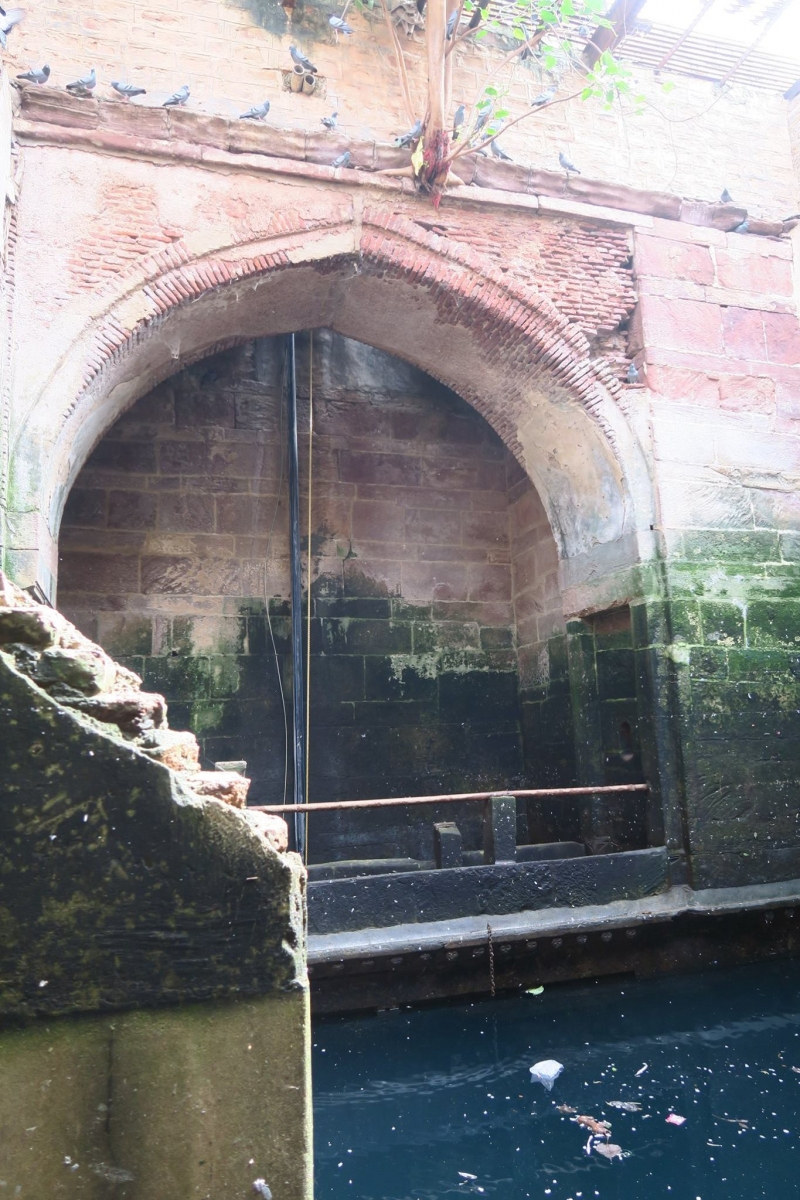
Fig. 4. Inside the Suraj Kund
Lakes
According to the School of Desert Sciences survey,[4] there were 46 talabs or lakes in Jodhpur once, of which only 40 could be traced in 1989. One of the few talabs which still holds clean water is the Ranisar Talab (Fig. 5) in the old city which was once the main water source for the walled city and the fort.
Ranisar Talab: The Ranisar’s name commemorates its patron, one of the queens (rani) of Rao Jodha, the founder of Jodhpur. It was constructed in 1460 AD, simultaneously as Jodha was building the new city. Located close to the Mehrangarh Fort, and protected by the city wall, the Ranisar Talab is fed by rainwater runoff from the hills that surround it. Nearby is its twin, the Padamsar, a smaller lake. The Ranisar’s water was historically used by both the city and the occupants of the fort. The water was carried up to the fort by an arhat which fed channels leading to a tank in the Chokelao garden inside Mehrangarh. From here another system of arhats and aqueducts brought water up to the palaces of the royals further above. When the Ranisar was recently emptied to be cleaned, five deep wells were found on its floor.
Fig. 5. Worship at the Ranisar during Gangaur festival
Ranisar still holds clean water as its catchment area is largely protected, having been converted into a protected private reserve known as the Rao Jodha Desert Rock Park. The red sandstone ghat of this lake comes alive on religious occasions, especially the annual celebration of the Gangaur festival, when idols of the Hindu goddess Parvati are brought to the lake for worship and immersion. Ranisar’s water holds symbolic import to this desert city. The overflowing of the lake in the monsoon is greeted with jubilation by the residents of the old city (as happened in 2016), it being an omen of good monsoons and prosperity for the entire region.
Tanks
Gulab Sagar: Gulab Sagar (Fig. 6) is a large twin-tank within the city which was once fed by rainwater and water channeled from the Balsamand Lake in the outskirts of Jodhpur. The lake is best-known for its patron—the formidable concubine Gulab Rai from the court of Maharaja Vijai Singh of Jodhpur (r. 1772–93 AD). Being a close confidant of the Maharaja, Gulab Rai held the exalted title of Paswan within the court and had vast resources at her disposal, as indicated by her construction of Gulab Sagar and an entire complex of palaces, temples and wells around it, including a jhalra known as the Mahlyabagh Jhalra. The Gulab Sagar consists of one large tank and a smaller one separated by a walkway running in between. Gulab Sagar’s original architecture has more or less been lost, except for what remains of a palace above it, which is now used as a school. The railings seen around the tank were erected in recent renovations that have failed to prevent rampant pollution of the lake by local residents who use it as garbage dump. Channels which feed the tank have been converted into sewage drains or have been destroyed by encroachers.
Fig. 6. The Gulabsagar seen against the cityscape of Jodhpur
The City of Stepwells—Bundi
Among cities in Rajasthan with a large number of water structures is Bundi, often nicknamed the city of stepwells for scores of large and small stepped water structures that it contains. Once the capital of the kingdom of Hadoti, Bundi is home to the majestic Taragarh Fort, built on a hillock overlooking the city. The Taragarh Fort was supplied with water from several open stepped ponds that still survive. At least one of these is linked to a hammam and a temple nearby. At the centre of the city is a large tank—the Nawal Sagar (Fig. 7). The Nawal Sagar houses a temple to Varuna, the Hindu god of the oceans, the garbhagriha (sanctum sanctorum) of which lies submerged when the lake fills up with rainwater. Ghats line the lake on all sides and small pavilions have been built at the centre of the lake indicating that it was the site for public celebrations in the erstwhile kingdom.
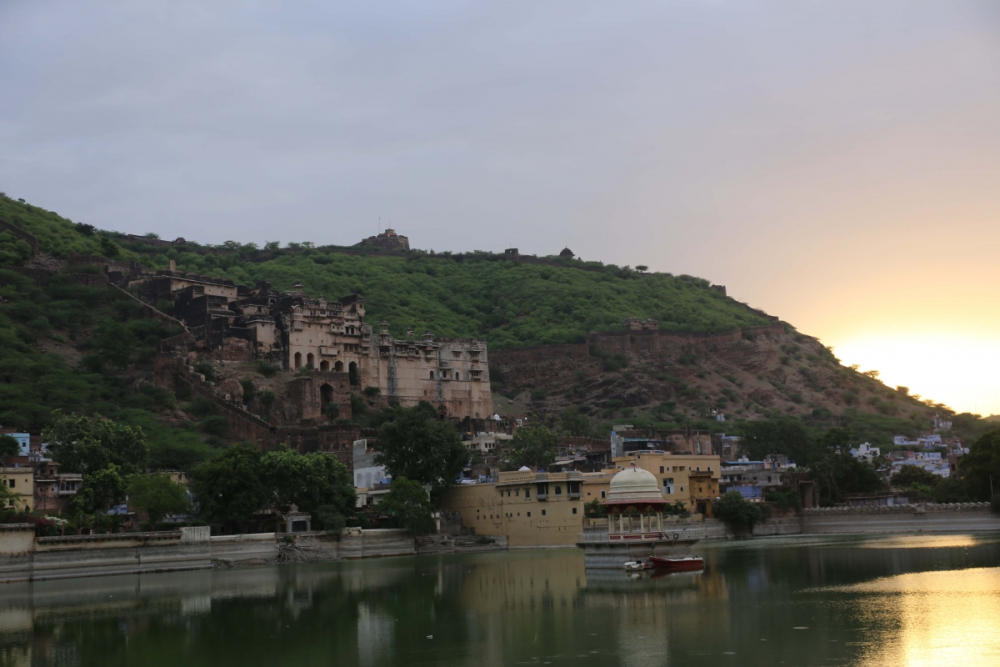
Fig. 7. The Nawal Sagar
The most magnificent of Bundi’s stepwells is the Raniji ki Bavdi (Fig. 8), built in 1699 AD by the queen Nathawatji. Built tall like an underground cathedral, ornate carved pillars on its entrance pavilion are linked by torans (archways commonly seen at the entrance of temples) and are topped by elephant capitals. Elegantly carved low reliefs of fighting elephants, common in the art of the Hadoti region, can be found within. Miniature shrines on the walls of the bavdi hold reliefs depicting the dashavatara (ten avatars) of Vishnu. The bavdi descends in multiple levels leading to an archway. Beyond the arch is the deep well, with remnants of an arhat visible above.
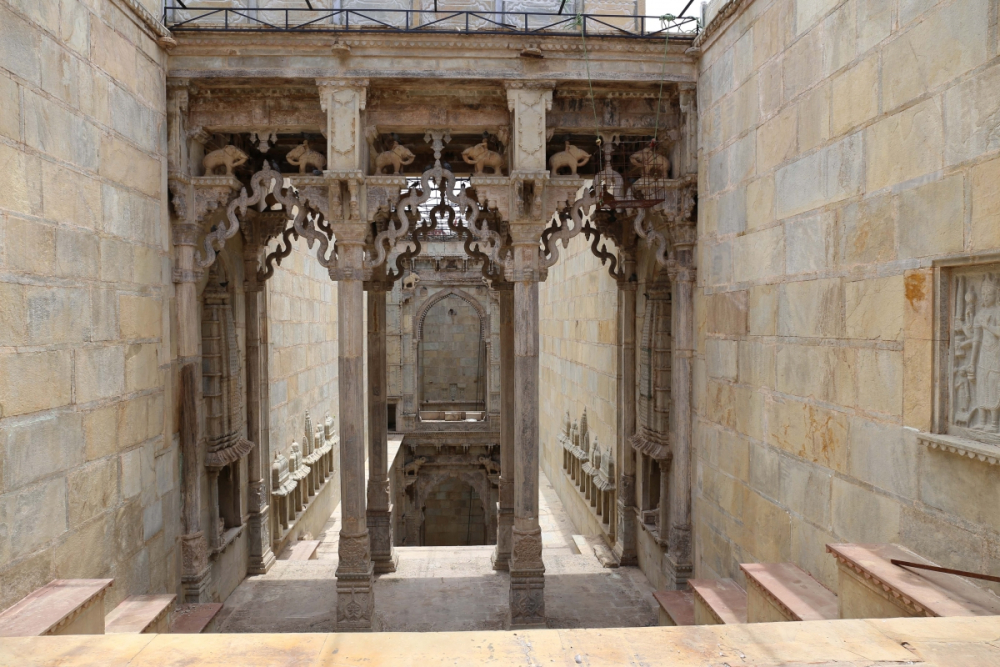
Fig. 8. Pillars with elephant capitals at the entrance of Raniji ki Bavdi
Also, notable in the city of Bundi are a pair of twin stepwells called Nagar–Sagar. These exist on either side of a busy market street. Larger than either of these is the Dabhai Kund, a large stepped pond, now dry, with shrines within and an associated chattri (pavilion) housing a Shiva linga.
Uses and Patronage
Waterbodies in Rajasthan were once at the centre of the social and religious life of the communities that used them. They provided fresh water to local and itinerant populations in addition to animals and birds. They were a source of water for irrigation and harboured fish (though fishing in waterbodies is generally considered taboo), reptiles and myriad other forms of life. Women, traditionally charged with the burden of fulfilling the water needs of a household, would gather at stepwells, tanks and lakes to collect water in pots, bathe, rest or wash clothes. In the summer as dust storms blew in from the desert, stepped wells nestled underground provided cool shelter and were often the venue for leisurely gatherings, especially for the elite. In the absence of caravansarais, stepped wells in the desert tracts of Rajasthan and neighbouring Gujarat also provided refuge at night to travellers, traders, pilgrims and even bandits as they braved life on the road.[5] Water was a necessary component for religious rites and as a result one finds that many stepped ponds were constructed in association with a temple, mosque or shrine nearby and themselves hold small shrines where the neighbourhood community offered prayers or performed rites of birth, marriage or death. Their status as sacred precincts meant that entry into many Hindu waterbodies was likely to be forbidden to a significant section of the population—the ‘lower’ untouchable castes who performed menial labour in villages and towns and whose bodies were considered polluting by Hindu society.
Water architecture being indispensable to life in Rajasthan, across time, both individuals and communities commissioned waterbodies of various types to meet their needs. Ordinary wells (kua and bera) being easier to construct were built by most segments of the society to cater to their own communities. These were often referred to by the name of the community that owned and made use of the structure, for example Joshiyon ke kua (the well of the Joshi community), Sonaron ke kua (the well of the goldsmith caste) and so on. But the construction of large man-made tanks and lakes, which required large-scale mobilisation of materials and labour, were usually undertaken by the elite. Among the prime patrons of such expensive constructions were royalty and nobility. To their patrons, the construction of stepped wells and ponds, like the construction of temples, were charitable acts that earned them religious merit and the affection of their subjects and community members. Even today in the dry climate of Rajasthan, quenching the thirst or hunger of people and animals is considered an act of great merit, superseding the conduct of religious rituals for private gain. This manifested in the practice in cities and villages of leaving small troughs of water outside homes or under trees for birds and animals, along with grains and flat bread. The construction of large waterbodies was also unmistakably an assertion of power—demonstrating the ability of a patron to command vast resources. The charitable acts of a patron were recorded for posterity in celebratory inscriptions on entryways of the waterbodies they built or on commemorative pillars (kirtistambh) erected at the site. The structures were often named after those who commissioned them and were built to last several generations. A patron’s name was thus inscribed into the memory of a landscape and its people. It is the information contained in inscriptions, archives and other sources that now enable us to form a general idea of the nature of patronage of water structures in Rajasthan.
The Patrons of Jodhpur’s Water Architecture
A majority of large waterbodies in Rajasthan were constructed by royals belonging to different Rajput clans. These include some of the state’s oldest surviving stepwells in the state such as the 9th-century Chand Baori in Abhaneri. Across centuries Rajput dynasties built magnificent tanks and lakes in regions such as Jaipur, Jodhpur, Todaraisingh, Alwar, Neemrana, Bundi and Bikaner. Interestingly, in Rajasthan and neighbouring Gujarat, a number of royal patrons of waterbodies can be seen to be queens and other noble women, pointing to an arena of widespread architectural patronage by women which is worthy of close investigation. Jutta Jain-Neubaeur in her pioneering study of Gujarat describes several early water monuments commissioned by female patrons, prime among them being the Rani ki Vav in the city of Patan built by the eleventh-century queen (rani) Udayamati, wife of Chalukya king Bhimadeva. Inscriptional evidence reveals several such instances where women constructed waterbodies to gain divine favour upon themselves and their families.[6] Vaghela queen Rudadevi built a grand stepwell in Adalaj in 1500 AD. Bai Harira, a superintendent of the harem of Mahmud Begada (1458–1511 AD), known to have built a stepwell in Ahmedabad is among the female patrons who were able to command resources by virtue of their proximity to royalty. Queens were responsible for the construction of mammoth waterbodies such as Raniji ki Bavdi in Bundi or the Ranisar Talab in Jodhpur. Of these, Jodhpur is among the cities whose architecture reveals widespread involvement of royal women patrons. Among the stepped wells and stepped ponds that dot the city, Tunwarji ka Jhalra, Panchmajisa ki Baori, Jadechiji ka Jhalra are all monuments still surviving that were constructed by various queens. Among Jodhpur’s female patrons who were not born into the traditional aristocracy but who gained power by their proximity to the royal household is the court dancer turned concubine Gulab Rai (rai is a term that in Jodhpur denoted court singers and dancers). In the second half of the eighteenth century, she constructed the Gulab Sagar, a mammoth tank surrounded by an associated complex of palaces that served as an architectural expression of both her power and benevolence. Gulab Rai also built a stepped pond near Gulab Sagar, called the Mahlya Bagh (the enclosed garden) Jhalra for being placed close to a garden palace nearby. Archival evidence reveals instances of architectural patronage by other concubines as well. In 1836–37 AD, Pann Rai, a concubine from the court of Maharaja Man Singh of Jodhpur is known to have built a now extinct stepwell in Jodhpur for which she used both her personal funds (received as land revenue from the villages granted to her by the Maharaja) and funds granted by the state treasury for the purpose.[7]
The construction of water structures was also undertaken by Jodhpur court officials and other powerful individuals who could marshal the necessary resources. Among them is a wealthy merchant named Madhu, son of Chanak, who according to an inscription,[8] constructed a baori in Mandore near Jodhpur. The inscription that begins with a dedication to Shiva and Vishnu describes the patron as a guṇvan or do-gooder, whose benevolence and piety is demonstrated by this act of construction. Among nobles who constructed waterbodies is Triwari Sukhdev, an official who was in the service of both Maharaja Jaswant Singh of Jodhpur (r. 1638–78 AD) and his son Maharaja Ajit Singh (r. 1707–24 AD). In 1718 AD, he constructed a jhalra, locally known as Sukhdevi Triwari Jhalra or Kriya Jhalra. An inscription onsite records the jhalra’s construction and subsequent consecration year as 1828 AD.
[1] Jain-Neubauer, The Stepwells of Gujarat, 1.
[2] To learn more about this decline, see http://www.downtoearth.org.in/coverage/in-crisis-23429 (last accessed 24 June, 2019).
Bibliograph
Bahi 10, Maharaja Mansingh Pustak Prakash, Jodhpur.
Jain-Neubauer, Jutta. The Stepwells of Gujarat: In Art-historical Perspective. New Delhi: Abhinav Publications, 1981.
Jain-Neubauer, Jutta, ed. Water Design: Environment and Histories. Mumbai: Marg Publications, 2016.
Lautman, Victoria. ‘India’s Forgotten Stepwells.’ ArchDaily, June 28, 2013. http://www.archdaily.com/395363/india-s-forgotten-stepwells (last accessed 24 June, 2019).
Livingston, Morna. Steps to Water: The Ancient Stepwells of India. New York: Princeton Architectural Press, 2002.
Pangare, Ganesh. ‘In crisis.’ Down To Earth, 1997. http://www.downtoearth.org.in/coverage/in-crisis-23429 (24 June, 2019).
Shrimali, Govindlal. Rājasthān kē abhilēkh. Jodhpur: Maharaja Mansingh Pustak Prakash, 2000.
Singh, Y.D. Rājasthān kē kuē ēvam bāvadiyān. Jodhpur: Maharaja Mansingh Pustak Prakash, 2002.
